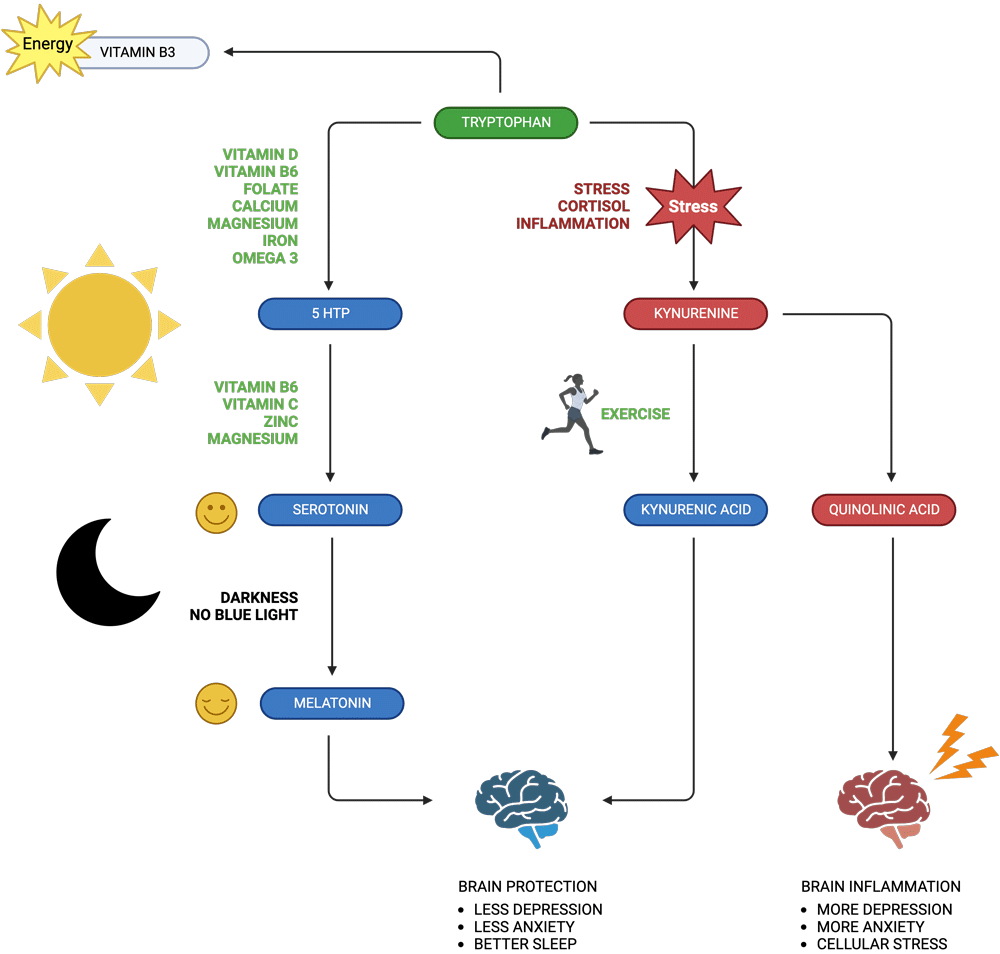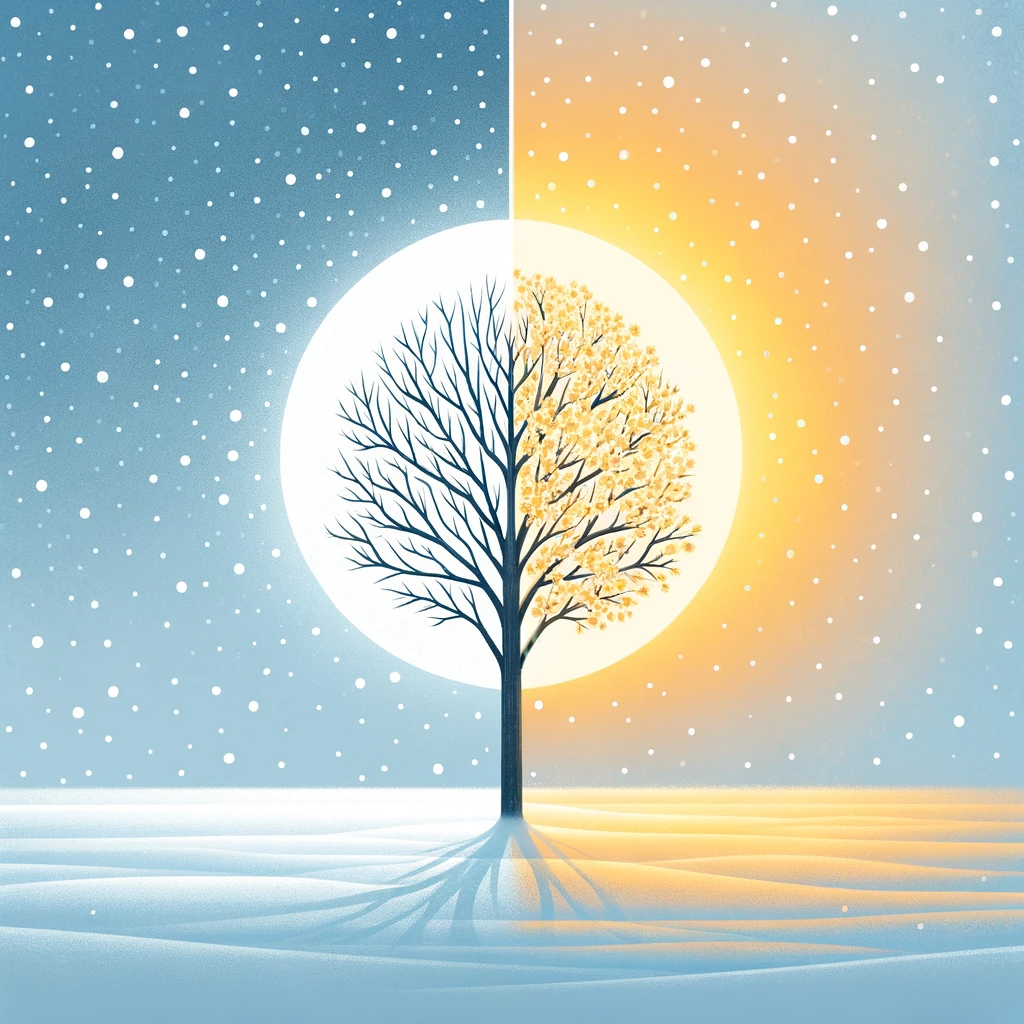Do you start feeling sad as the days get shorter in the winter? Do you get more tired, lose your motivation, avoid friends and family, eat more starch and sugar and put on weight? This seasonal cluster of symptoms is associated with Seasonal Affective Disorder (SAD), a type of depression that occurs at the same time each year, typically starting in autumn or winter and ending in spring or early summer.
The development of SAD is tied to disturbances in circadian rhythms – our biological clocks that determine the rhythm of life – and neurotransmitter activity caused by lack of sunlight. The main neurotransmitter affected is serotonin which is vital for maintaining good mood, and regulating our appetite and menstrual cycles.
Women are diagnosed with SAD at a much higher rate than men – about 4 to 1. Researchers aren’t exactly sure why women are more susceptible, but hormones may play a role. Oestrogen seems to heighten the effects of serotonin, making women more sensitive to fluctuations in light. Clinical trials have shown that serotonin significantly increases between days 7 to 11 and 17 to 19 of the menstrual cycle. This indicates that premenstrual syndrome (PMS) is closely associated with mood disorders through oestrogen-serotonin regulation. According to the molecular biology studies, the decreased oestrogen causes the hypothalamus to release noradrenaline, which triggers a decline in acetylcholine, dopamine, and serotonin that leads to insomnia, fatigue, depression, which are common symptoms of PMS and Premenstrual Dysphoria (PMDD). Low serotonin in PMS can lead to cravings for sugar and starches, so if you already experience PMS, you may find it worsens in the low light of winter.
The association of sunlight with serotonin goes back 3 billion years, first evolving in single celled organisms, before the existence of plants and brain neurons. Research shows that as evolution progressed, serotonin evolved as a homeostatic regulator, integrating mind and body with the outside world.
The pathway to making serotonin starts with the amino acid tryptophan (you might be familiar with the supplement 5-HTP, 5-hydrohytryptophan) and branches out to make melatonin and vitamin B3 (niacin). Melatonin helps regulate the sleep-wake cycle, serotonin regulate appetites, sleep, mood, and pain, while niacin is needed for energy metabolism and DNA production.

Adapted from petersmith.co.uk, using Biorender
You can see from the diagram above that what determines whether tryptophan ends up making antidepressant serotonin and brain-protective melatonin, or the brain toxic quinolinic acid is determined by a number of factors including the presence of nutritional deficiencies, our levels of stress, inflammation and physical exercise. Additionally tryptophan is best derived from animal protein, so not eating enough protein will lead to a tryptophan deficiency, creating a problem right at the top of the chain. The highest amount of tryptophan is found in turkey, perhaps this is why we’ve chosen it to celebrate in the dead of winter?
The lack of sunlight in the winter has an additive negative effect, which is why the recommended therapy for SAD is exposure to light. Light can be roughly divided into ultraviolet (UV) and visible light. The most effective light type binding to tryptophan and in alleviating the depression associated with seasonal affective disorder (SAD) is blue light – but only in the day. At night, blue light – from emitted from screens of phones, iPads, tablets, computers – will prevent melatonin production and prevent sleep.
Light emitting devices are widely available and for therapeutic benefit the eyes need to be exposed to 10,000 lux for 20-30 minutes in the morning, at a distance of no more than 20-30 cm away from the light box. The benefits of light therapy can be experienced within days. The positive change in mood and sleep can be dramatic.
All cells and organs of the body, and especially of the brain, are affected by tryptophan and the serotonin system. Interestingly many other compounds are synthesised from tryptophan, including
- Psilocybin mushrooms, commonly known as magic mushrooms;
- DMT: this occurs in many species of plants and is commonly used as a hallucinogen via drinking or smoking. It may have a potential role as a neuroprotectant and/or neuroregenerative agent;
- Bufotenin: a DMT analog, this molecule is found in mushrooms, plants, and the skin and venom of toads (Bufo genus);
- 5-MeO-DMT: this molecule is widely distributed in plants and toads, and thought to be used in shamanic purposes, tribal ceremonies, and healing rituals in South America and the Caribbean;
- Ergot, ergotamine: this parent compound of the major hallucinogen LSD has long been known to be produced by a fungus, genus Claviceps. LSD was synthesised by the chemist Albert Hofmann and is believed to be one of the most potent mind-altering compounds discovered to date;
- Ibogaine: this is found in a number of plants, principally in a member of the dogbane family known as iboga (Tabernanthe iboga). This is a dissociative psychedelic that may show promise in treating alcohol addiction;
- Yohimbine: this is found in the bark of the West African evergreen Pausinystalia yohimbe Pierre. In Africa, yohimbine has traditionally been used as an aphrodisiac.
All these compounds can function as antioxidants in single-cell organisms and many have been used by by humankind for thousands of years as:
- empathogens – drugs that produce experiences of emotional communion, oneness, relatedness, emotional openness—that is, empathy or sympathy, and
- entheogens – psychoactive substances that induce alterations in perception, mood, consciousness, cognition, or behaviour for the purposes of engendering spiritual development or otherwise in sacred contexts.
Serotonin has a special relationship with sunlight that began to emerge at the beginning of life on Earth and this is the magic elixir that helps to maintain our homeostasis between body and mind, improving our internal and social interactions. So tryp out on light (and turkey).


























